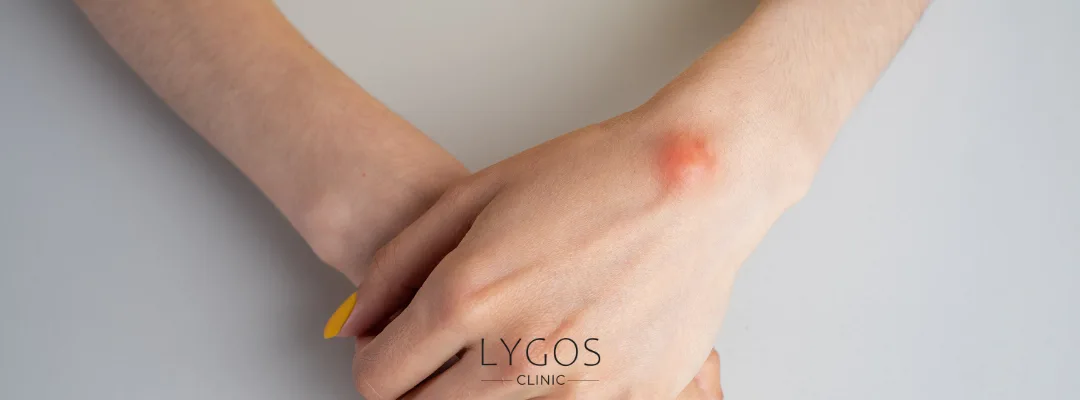What Is a Lipoma (Fatty Lump)?

Chose Your Topic
What Is a Lipoma (Fatty Lump)?
A lipoma, commonly known as a fatty lump, is a slow-growing, generally harmless accumulation of fat cells located under the skin. Most people encounter at least one lipoma in their lifetime. These growths are typically round, soft, and mobile when touched. They most commonly appear on the back, shoulders, arms, legs, and neck.
But is the answer to “what is a lipoma” limited to a physical definition? Certainly not. Genetics, lifestyle, and environmental factors can all contribute to the development of lipomas. In this article, we will cover everything you need to know about lipomas.

Why Do Lipomas Form?
After understanding what a lipoma is, the next most common question is why they form. While the exact cause isn’t always clear, several factors are believed to contribute:
- Genetic Predisposition: Lipomas tend to occur more frequently in individuals with a family history of them.
- Trauma: Minor injuries to the fatty tissue under the skin can sometimes lead to the development of a lipoma.
- Age: Most common between ages 40–60.
- Metabolic Disorders: Imbalances in cholesterol or triglyceride levels can increase the risk of lipoma formation.
- Obesity: A higher body fat percentage can raise the likelihood of developing lipomas.
However, not every overweight person will develop a lipoma. This shows that the causes can vary from person to person.
What Are the Symptoms of a Lipoma?
Lipomas are often painless and have several distinctive features:
- Soft, Round Mass Under the Skin: This is the most noticeable sign. It usually moves slightly when pressed.
- Painless Swelling: Lipomas are generally not painful but can cause discomfort if they press against nerves.
- Slow Growth: They can increase in size over time, but if a lipoma grows rapidly, it should be examined by a doctor.
- No Skin Changes: Typically, lipomas do not cause discoloration or sores on the skin.
If you notice these symptoms, questions like “what is a lipoma” and “what should I do” become important. Consulting a healthcare professional is always the best course of action.

Are Lipomas Dangerous?
Lipomas are generally benign (non-cancerous) and pose no serious threat. The risk of a lipoma turning into cancer is extremely low. However, they can sometimes cause cosmetic or physical discomfort.
Be cautious if the following occurs:
- Rapid growth
- Pain or discomfort
- Skin discoloration
- The lump becomes hard and immobile
Though rare, these could indicate more serious conditions. Therefore, professional evaluation is crucial.
How Are Lipomas Treated?
Most lipomas don’t require treatment unless they cause discomfort or aesthetic concerns. Common treatment options include:
- Observation and Monitoring: Small, painless lipomas that don’t grow can simply be monitored over time. Doctors will check for any changes during routine exams.
- Surgical Removal: This is the most effective and permanent method. The procedure is usually done under local anesthesia and involves removing the entire lump.
- Liposuction: In some cases, the fatty tissue is removed via suction. However, this may not remove the entire lump, increasing the risk of recurrence.
Treatment plans should be tailored to individual needs.
Is Surgery Always Necessary?
Surgery is not always required, but it may be necessary in certain cases:
- Cosmetic Reasons: Lipomas on visible areas like the face or neck can cause self-consciousness.
- Pain and Discomfort: When pressing on nerves or sensitive areas.
- Functional Issues: Lipomas near joints can limit movement.
- Rapid Growth: Fast-growing lumps should always be removed.
Typically, surgery is a minor procedure performed with local anesthesia and ensures complete removal.

Can Lipomas Be Prevented?
While complete prevention isn’t possible, certain habits can help reduce the risk:
- Healthy Diet: Eat a balanced diet low in saturated fats.
- Regular Exercise: Helps maintain a healthy body fat percentage.
- Stress Management: Reducing stress helps maintain hormonal balance.
- Genetic Awareness: If there’s a family history, consider regular checkups.
Just as understanding “what is a lipoma” is important, taking preventative steps is equally vital for overall health.
Therefore, for an accurate diagnosis of “what is this lump?”, tools like ultrasound or biopsy may be used.
In this article, we’ve tried to answer the question “what is a lipoma” in detail. These are generally benign and often don’t require treatment. However, if they cause physical, aesthetic, or health-related concerns, medical intervention is possible.
If you notice an unusual lump on your body, it’s best to consult a specialist for proper diagnosis and treatment options.
What Is a Lipoma (Fatty Lump)? Frequently Asked Questions (FAQ)
A lipoma is a benign (non-cancerous) lump made of fat cells under the skin. It is usually harmless and rarely turns into cancer. However, if you notice changes like rapid growth or pain, consult a doctor.
No, lipomas typically do not disappear without treatment. They can be monitored if small and symptomless, but removal is needed if they cause discomfort.
No. A lipoma forms beneath the skin and cannot be "popped." Attempting to do so may cause infection. Always seek professional medical help.
Usually not. However, if they press on nearby nerves or become inflamed, they may become painful. In such cases, treatment may be needed.



